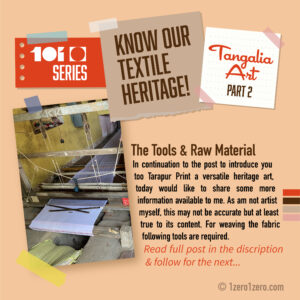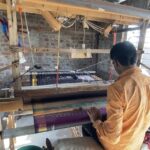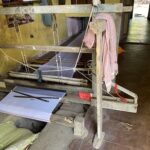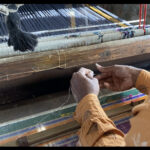
The Tools & Raw Material
In continuation to the post to introduce you too Tangaliya versatile heritage art, today would like to share some more information available to me. As am not artist myself, this may not be accurate but at least true to its content.
For weaving the fabric following tools are required.
-
- Bobbin Frame
- Pit Loom
- Pannas
- Haddle Hook
- Shuttle
- Brush, Scissors, Blade
Bobbin Frame:
It is a wooden frame with wooden columns having horizontal metal rods in which Bobbins are inserted. This bobbins are filled with warp threads and segregates each warp thread
Pit Looms:
The loom produces the fabric by weaving of Warp & Weft threads. Typically they are counter balanced with two shafts having two paddles & flying bobbin. A device by which the warp threads are threaded are specially designed to keep threads separate and equally parallel spaced is called Reed. It is held by sley from overhead horizontal wooden/ metal beam.
PANNA:
Panna is a very common word in textile meaning Width. While purchasing also buyer would specifically want to know about width of the fabric. Here in Tanglaiya weaving it is a device made of bamboo to maintain the width of fabric and prevent shrinking.
Others:
Haddle hook threads a warp through it’s eye. Shuttle has a weft and it flies horizontally. Brush is for cleaning of loom, scissors and blades are use for cutting threads when required.
YARN:
This being woven art with design of thread beads, the very important component is the yarn. In early days usually it was made by hand spun wool yarns within the limitation of fineness, quality and colour but now it has progressed to selection of machine made yarn form variety of Silk & cotton. The quality of fabric to be manufactured depends on the quality of Yarn & its construction.
Primary selection method of yarn or fabric is visual and feel like shine, colour, softness, smoothness etc… The such elements and other which can not be defined by visual methods are tested on specially designed apparatus to measure linear density, lea strength and elongation, evenness, hairiness etc… of yarn. These data helps artisan to relate with their rich experience an
d selection process of quality yarn. Which has helped present the variety of good quality fabric.
Click here to Read Part 1


